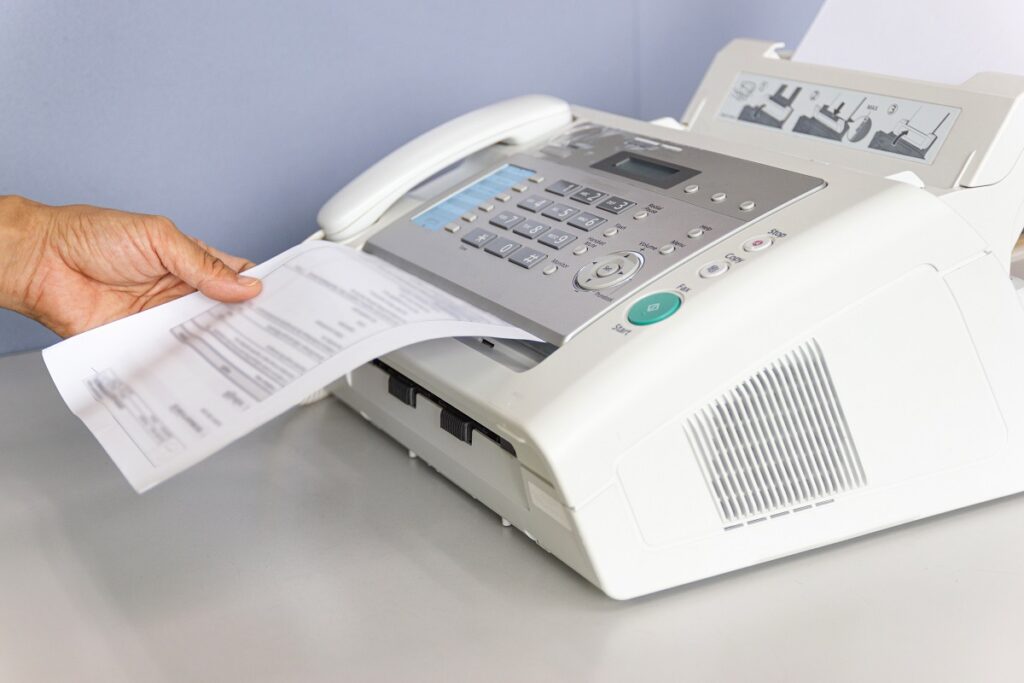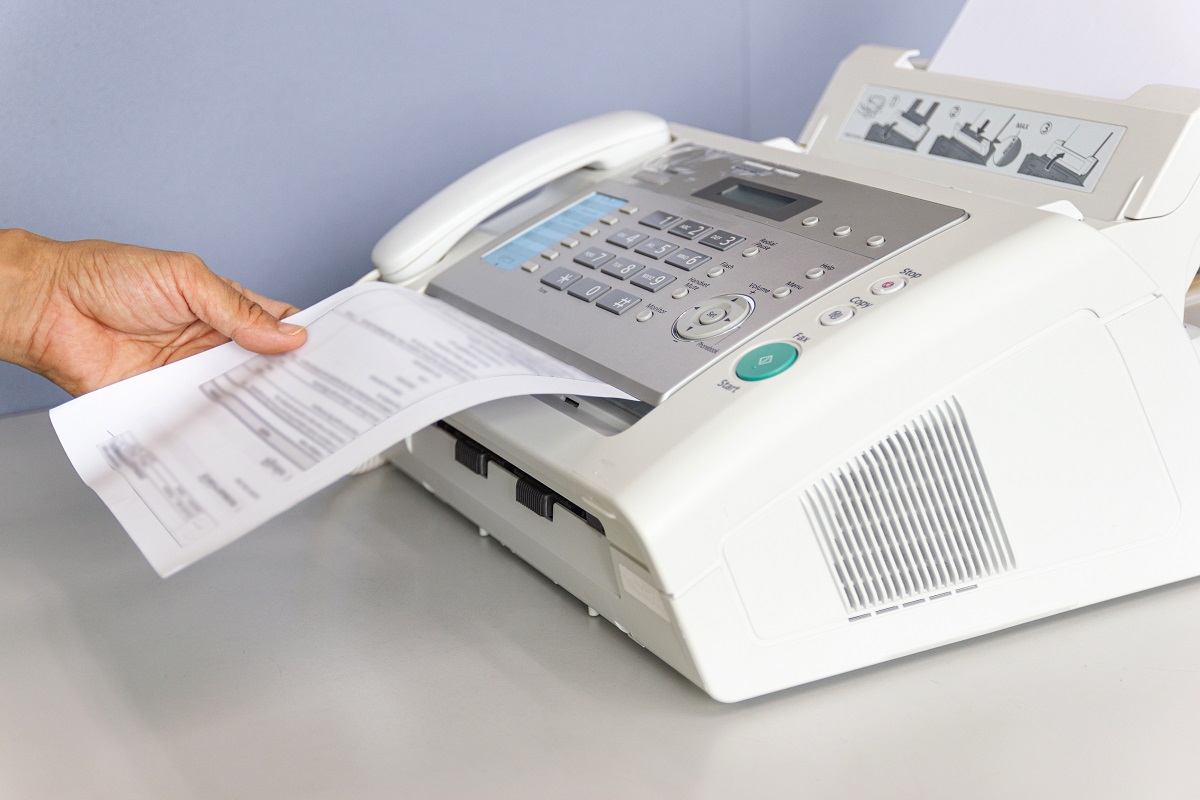
The humble fax, a technology that dates back to the mid-20th century, continues to provide a reliable means of transmitting documents even today, especially where security and legal requirements are concerned.
Despite the prevalence of email and other digital communication methods, faxing remains an essential tool for many, even if it might not be the fastest way of receiving documents. But how long does a fax take in reality? And what influences the time needed? You’ll find the answers to those questions below.
The Basics of Fax Transmission
Before diving into the specifics of fax transmission time and how long does it take to fax something, let’s take a moment to understand the basic principles of how a fax machine works.
A fax machine scans a document, converts the information into digital signals, and transmits these signals over a telephone line to another fax machine. The receiving fax machine then decodes the signals and prints out a copy of the original document. The process seems simple enough, but various factors can affect the time it takes for a fax to be received.
Factors Influencing Fax Transmission Time
There are several things that might affect how it will take before the faxed document is ready for you to read over – below, you will find some of them.
Resolution and Image Quality
The image quality and resolution of the faxed document can directly impact the time it takes to transmit the data. Higher resolution images require more data to be sent, thus increasing the transmission time. A standard resolution fax may transmit faster than a high-resolution fax, but the trade-off is a potential loss of detail in the received document.
Connection Speed
Fax machines rely on telephone lines for transmission, and the connection speed of these lines can vary. A slower connection can result in longer transmission times. Most modern fax machines use a standard 33.6 kbps (kilobits per second) connection speed, but older machines may operate at lower speeds, such as 14.4 kbps or 9.6 kbps. To minimize transmission time, ensure your fax machine is operating at the highest possible speed supported by your telephone line.
Document Complexity
The complexity of the document being faxed can also impact the time it takes to receive a fax. Text-only documents with simple formatting will generally transmit faster than documents containing images or intricate layouts. If you’re sending a fax with numerous images or detailed graphics, be prepared for the transmission to take longer.
Number of Pages
Unsurprisingly, the number of pages in a document will affect the time it takes to receive a fax. More pages mean more data to be transmitted, resulting in a longer wait for the receiving party. If you need to send a multi-page document, it’s helpful to break it up into smaller sections and send them separately, if possible, to reduce the overall transmission time.
So, How Long Does It Take to Receive a Fax?
With the factors outlined above in mind, the time it takes to receive a fax can vary greatly. However, a general guideline is that a standard-resolution, one-page fax typically takes around one minute to transmit. This estimate assumes a 33.6 kbps connection speed, a simple text document, and no interruptions or other issues during transmission. If any of the factors mentioned earlier are in play, the transmission time could be longer.
Tips for Optimizing Fax Transmission

You might be wondering – Is there any way to make the document I need to fax get to the recipient faster? The simple answer is yes, there is – there are actually several ways that can help you speed up the transmission.
Choose the Appropriate Resolution
While high-resolution faxes may offer better image quality, they also take longer to transmit. If the content of your fax is primarily text-based or the fine details of the document are not crucial, consider using a lower resolution setting to speed up the process.
Minimize Document Complexity
To reduce transmission time, simplify your document as much as possible. Remove any unnecessary images or graphics and use straightforward formatting. This not only helps your fax transmit faster but also ensures the received document is easy to read and understand by the recipient.
If complex elements are absolutely necessary, consider sending them as separate attachments or using an alternative method of transmission, such as email, for those parts of the document.
Use Compression Techniques
Some fax machines offer built-in data compression features, which can help reduce the amount of data that needs to be transmitted. By compressing the data, you can potentially speed up the transmission process without sacrificing image quality. Consult your fax machine’s user manual to determine if this option is available and how to enable it.
Perform Regular Maintenance
A well-maintained fax machine is more likely to perform efficiently and transmit faxes quickly. Regularly clean the scanner glass, replace consumables such as ink or toner cartridges when needed, and address any mechanical issues that may arise. Additionally, make sure your telephone line is functioning correctly and free of any interference or noise that could slow down the connection speed.
Opt for Digital Faxing Solutions
Digital faxing, also known as internet faxing or online faxing, uses internet connections rather than traditional telephone lines to send and receive faxes. This method can often result in faster transmission times, as well as additional benefits like lower costs, enhanced security, and the ability to send and receive faxes from any device with internet access.
One such solution is Fax Burner – and since we also have a free version available, you can test out how you like sending faxes digitally rather than physically.
The Bottom Line
One of the main things someone considering taking advantage of the reliability faxing brings is how long it will take for them to be able to read the document someone faxed over. And as you can see above, there are several things that influence the answer to this question. Generally, however, you should count about a minute for each page.
And remember – if speed is a major concern of yours, there are digital fax options available that can provide even faster transmission times than traditional fax machines.


